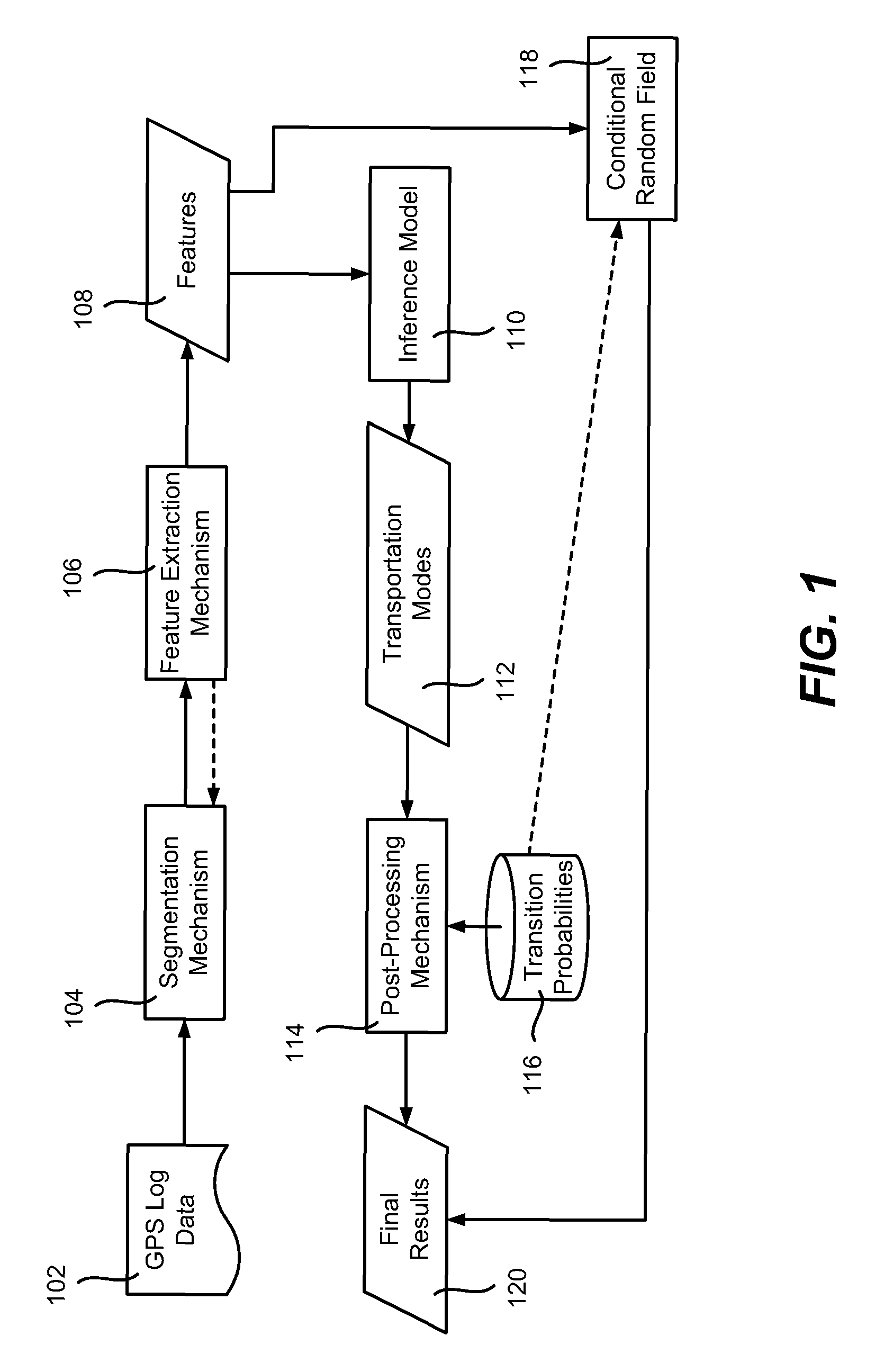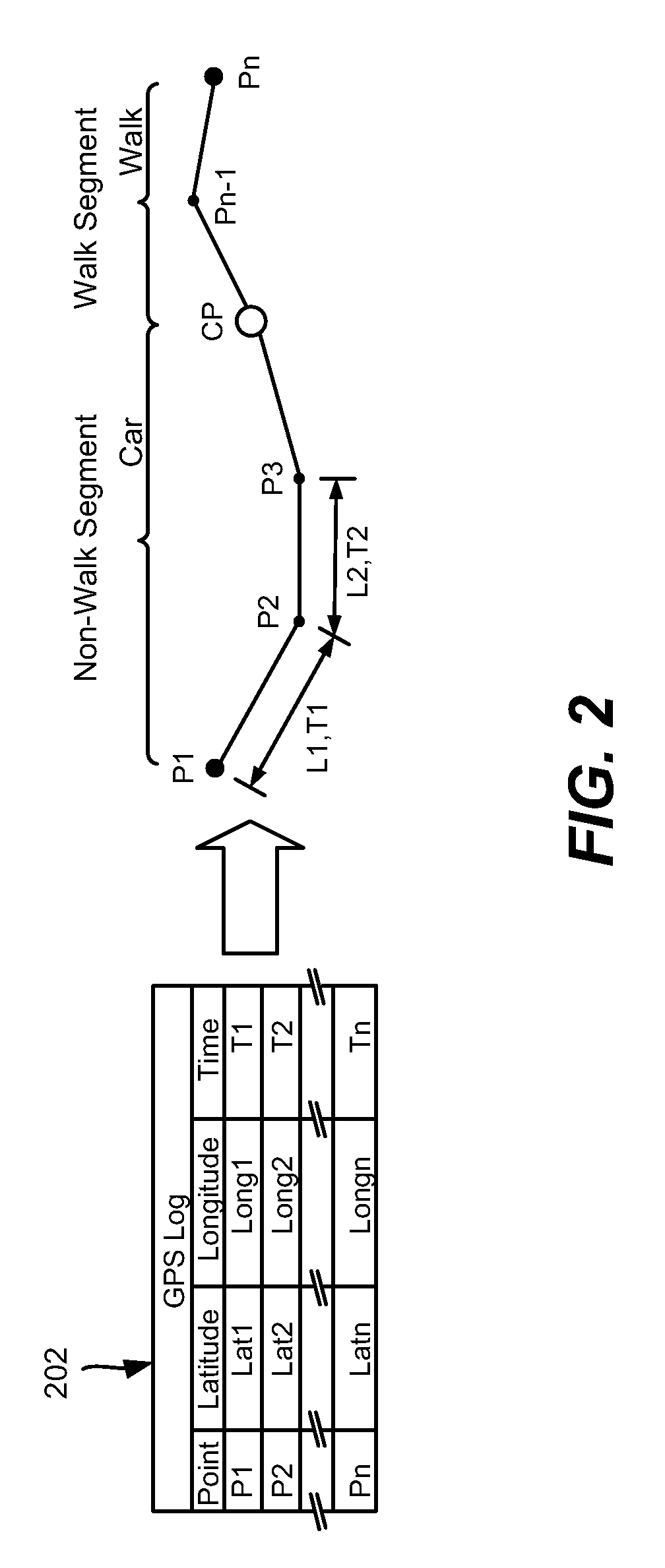Learning transportation modes from raw GPS data
- Summary
- Abstract
- Description
- Claims
- Application Information
AI Technical Summary
Benefits of technology
Problems solved by technology
Method used
Image
Examples
Embodiment Construction
>[0016]FIG. 5 is a representation of a set of segments and data points exemplifying the detection of change points.
[0017]FIGS. 6A and 6B comprise a flow diagram showing example steps taken to process GPS data to determine transportation modes.
[0018]FIG. 7 shows an illustrative example of a computing environment into which various aspects of the present invention may be incorporated.
DETAILED DESCRIPTION
[0019]Various aspects of the technology described herein are generally directed towards automatically determining transportation modes from raw GPS data, including multiple transportation modes in a single trip, and detecting transitions between modes. In one example implementation, this is accomplished via a change point-based segmentation method, an inference model, and a post-processing algorithm that is based on conditional probability. In an alternative implementation, conditional random field inference provides the inference model without the need for post-processing.
[0020]In one...
PUM
 Login to View More
Login to View More Abstract
Description
Claims
Application Information
 Login to View More
Login to View More - R&D
- Intellectual Property
- Life Sciences
- Materials
- Tech Scout
- Unparalleled Data Quality
- Higher Quality Content
- 60% Fewer Hallucinations
Browse by: Latest US Patents, China's latest patents, Technical Efficacy Thesaurus, Application Domain, Technology Topic, Popular Technical Reports.
© 2025 PatSnap. All rights reserved.Legal|Privacy policy|Modern Slavery Act Transparency Statement|Sitemap|About US| Contact US: help@patsnap.com



